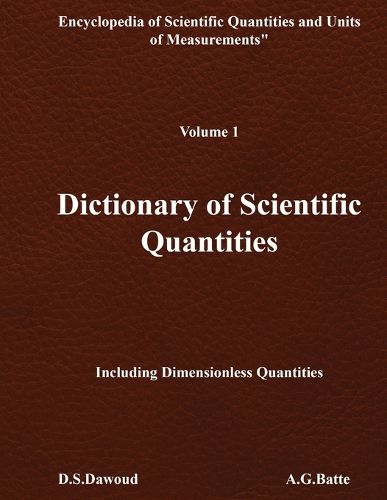Readings Newsletter
Become a Readings Member to make your shopping experience even easier.
Sign in or sign up for free!
You’re not far away from qualifying for FREE standard shipping within Australia
You’ve qualified for FREE standard shipping within Australia
The cart is loading…






This title is printed to order. This book may have been self-published. If so, we cannot guarantee the quality of the content. In the main most books will have gone through the editing process however some may not. We therefore suggest that you be aware of this before ordering this book. If in doubt check either the author or publisher’s details as we are unable to accept any returns unless they are faulty. Please contact us if you have any questions.
Since the appearance of humanities on earth, and since human beings started to have activities, the need for measuring units appeared. Measuring weight, distance (length) and time were the first tasks to be measured. This is why weights and measures were among the earliest tools invented by man. Primitive societies needed rudimentary measures for many tasks: constructing dwellings of an appropriate size and shape, fashioning clothing, or bartering food or raw materials. Man, understandably, turned first to parts of the body and the natural surroundings for measuring instruments. Early Babylonian and Egyptian records and the Bible indicate that length was first measured with the forearm, hand, or finger and that time was measured by the periods of the sun, moon, and other heavenly bodies.
With time, many societies started to appear worldwide and because of the lack of communication between them, each society developed its local units of measurement. As societies became nearer to each other, common interest started to appear and the need to have common units of measurements started to be a must. With time and with the development of societies and since more and more quantities started to be measured the need for modern units such as S.I. units became a necessity.
This dictionary, before giving the definitions for the different units of measurements, gives at first a good idea about the most current systems of units including the SI system. The dictionary has 2450 entries each defining one of the currently used units including local units. Besides that, it gives a summary for 1400 units.
$9.00 standard shipping within Australia
FREE standard shipping within Australia for orders over $100.00
Express & International shipping calculated at checkout
This title is printed to order. This book may have been self-published. If so, we cannot guarantee the quality of the content. In the main most books will have gone through the editing process however some may not. We therefore suggest that you be aware of this before ordering this book. If in doubt check either the author or publisher’s details as we are unable to accept any returns unless they are faulty. Please contact us if you have any questions.
Since the appearance of humanities on earth, and since human beings started to have activities, the need for measuring units appeared. Measuring weight, distance (length) and time were the first tasks to be measured. This is why weights and measures were among the earliest tools invented by man. Primitive societies needed rudimentary measures for many tasks: constructing dwellings of an appropriate size and shape, fashioning clothing, or bartering food or raw materials. Man, understandably, turned first to parts of the body and the natural surroundings for measuring instruments. Early Babylonian and Egyptian records and the Bible indicate that length was first measured with the forearm, hand, or finger and that time was measured by the periods of the sun, moon, and other heavenly bodies.
With time, many societies started to appear worldwide and because of the lack of communication between them, each society developed its local units of measurement. As societies became nearer to each other, common interest started to appear and the need to have common units of measurements started to be a must. With time and with the development of societies and since more and more quantities started to be measured the need for modern units such as S.I. units became a necessity.
This dictionary, before giving the definitions for the different units of measurements, gives at first a good idea about the most current systems of units including the SI system. The dictionary has 2450 entries each defining one of the currently used units including local units. Besides that, it gives a summary for 1400 units.